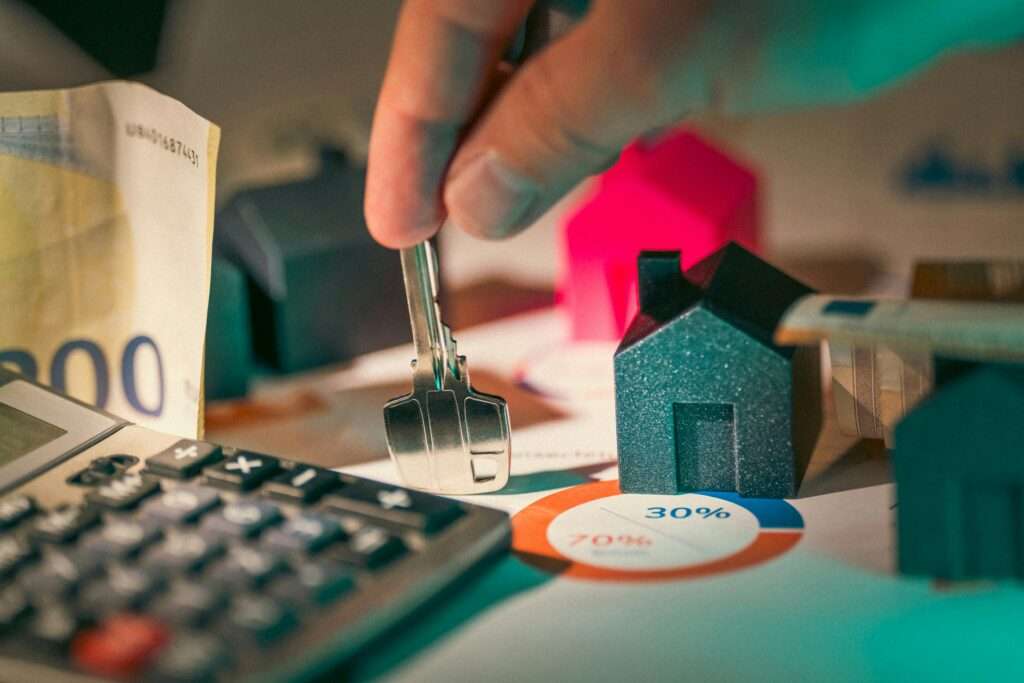
Introduction to Saving for a Home
Buying a home is one of life’s most significant financial milestones, and saving for a down payment is a crucial step in the process. A well-planned strategy can help you achieve your goal faster and set you up for financial stability as a homeowner.
Why Your Down Payment Matters
What is a Down Payment?
A down payment is the initial amount you pay toward the purchase of a home, typically expressed as a percentage of the total price.
Typical Down Payment Percentages
- Conventional loans: 3%–20%
- FHA loans: 3.5%
- VA loans: Often $0 down
Benefits of Larger Down Payments
- Lower monthly mortgage payments
- Reduced interest rates
- Avoiding private mortgage insurance (PMI)
Steps to Save for a House Down Payment
Step 1: Set a Clear Savings Goal
Start by determining how much house you can afford.
- Target home price: Research average home prices in your desired area.
- Down payment amount: Aim for at least 10%–20% of the target price. Use online calculators to estimate.
Step 2: Create a Budget and Stick to It
A solid budget is the foundation of any savings plan.
- Use the 50/30/20 rule:
- 50% for needs (rent, utilities, groceries)
- 30% for wants (entertainment, dining out)
- 20% for savings, including your down payment fund
- Track expenses: Use apps like Mint or EveryDollar to identify areas to cut back.
Step 3: Open a Dedicated Savings Account
Keep your down payment fund separate to avoid spending it on other expenses.
- High-yield savings accounts: Earn more interest than traditional savings accounts.
- Automate savings contributions: Set up automatic transfers to build your fund consistently.
Step 4: Explore Down Payment Assistance Programs
Many programs exist to help first-time homebuyers.
- State and local grants: Research assistance programs in your area.
- Eligibility criteria: Often based on income, location, or being a first-time buyer.
Step 5: Increase Your Income
Boost your savings by generating additional income.
- Side hustles: Freelancing, ridesharing, or selling handmade items online.
- Leverage bonuses or tax refunds: Direct these windfalls to your savings account.
Saving Hacks for a Down Payment
Reduce Non-Essential Spending
- Cut back on subscriptions or dining out to save more each month.
Use Cashback and Rewards Programs
- Apps like Rakuten and Ibotta can help you save while shopping.
Sell Unused Items for Extra Cash
- Declutter your home and sell items on platforms like Facebook Marketplace or eBay.
Save Windfalls for Your Down Payment
- Put unexpected income, such as tax refunds or work bonuses, directly into your savings account.
Tools to Help You Save
Budgeting Apps
- Mint: Tracks spending and creates custom budgets.
- YNAB (You Need a Budget): Focuses on allocating every dollar.
- EveryDollar: Simple app for zero-based budgeting.
Mortgage Calculators
- Use online mortgage calculators to estimate monthly payments and down payment requirements, helping you set realistic goals.
Tips for Staying Motivated While Saving
Visualize Your Dream Home
Keep pictures of your ideal home as a reminder of your goal.
Celebrate Milestones in Your Savings Journey
Acknowledge when you reach smaller goals, like saving your first $5,000.
Set Realistic Timelines
Be patient and set achievable deadlines to avoid frustration.
Common Mistakes to Avoid
Underestimating Closing Costs
In addition to the down payment, budget for closing costs (2%–5% of the home price).
Dipping Into Savings for Non-Essential Expenses
Keep your down payment fund untouchable to stay on track.
Rushing to Buy Without a Full Savings Plan
Avoid overextending yourself financially by ensuring you’ve saved enough.
Read More…
FAQs About Saving for a House Down Payment
- How much do I need for a down payment on a house?
Typically, 10%–20% of the home price is ideal, but some loans require as little as 3%. - What are the best accounts for saving a down payment?
High-yield savings accounts or money market accounts offer better returns. - Can I use my retirement savings for a down payment?
Yes, but withdrawing from retirement accounts may have tax penalties. Explore carefully. - Are there loans available with low or no down payment options?
FHA and VA loans offer low or no down payment options for qualified buyers. - How do I know if I’m financially ready to buy a house?
Ensure you have a stable income, a strong credit score, and enough savings for the down payment, closing costs, and an emergency fund.
